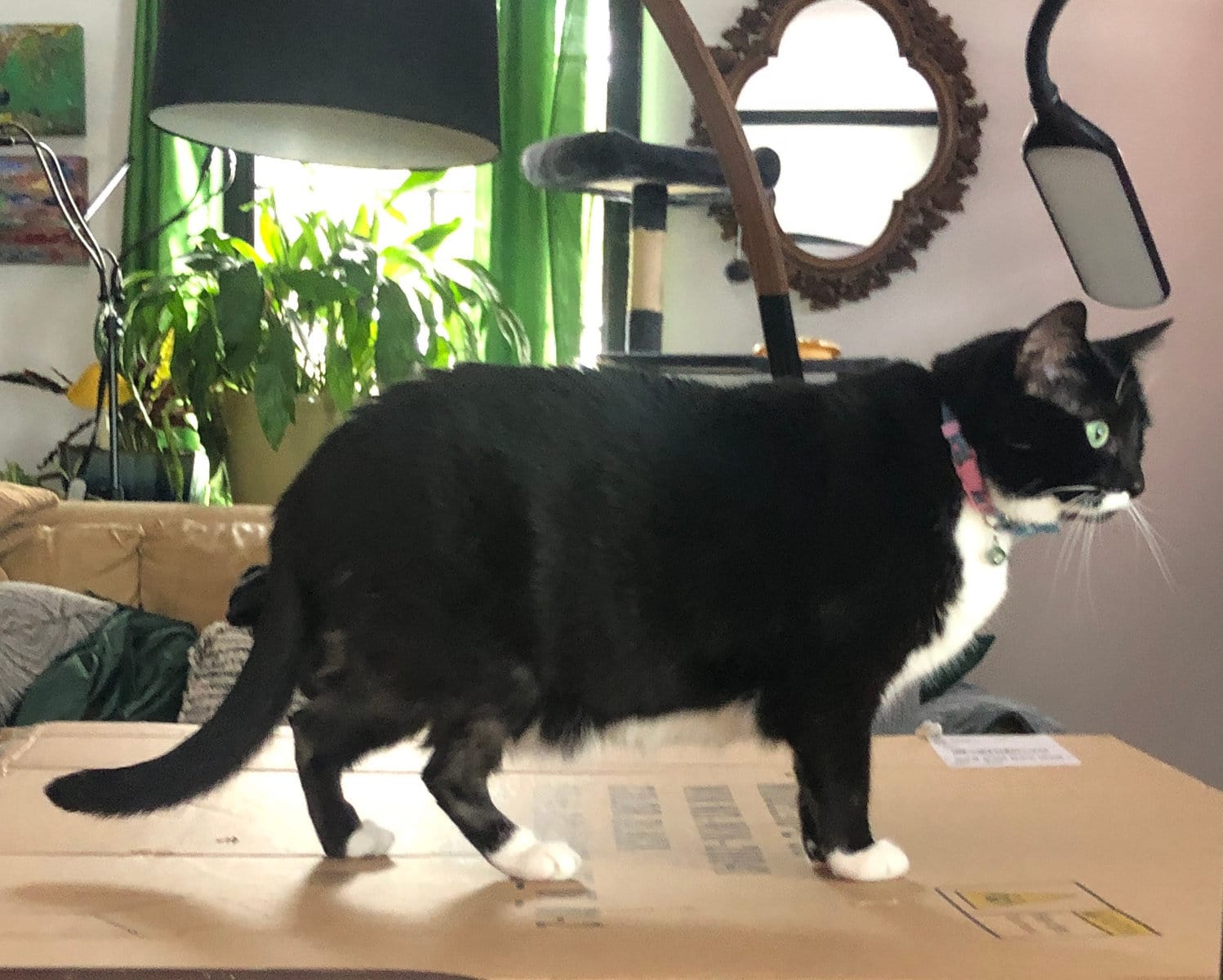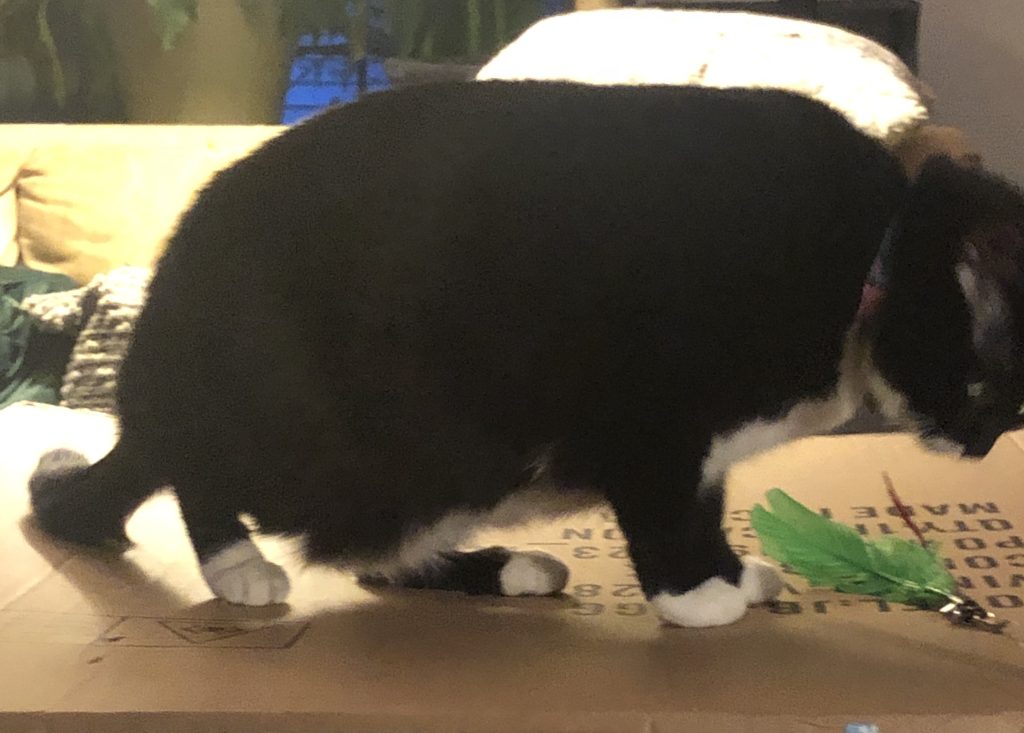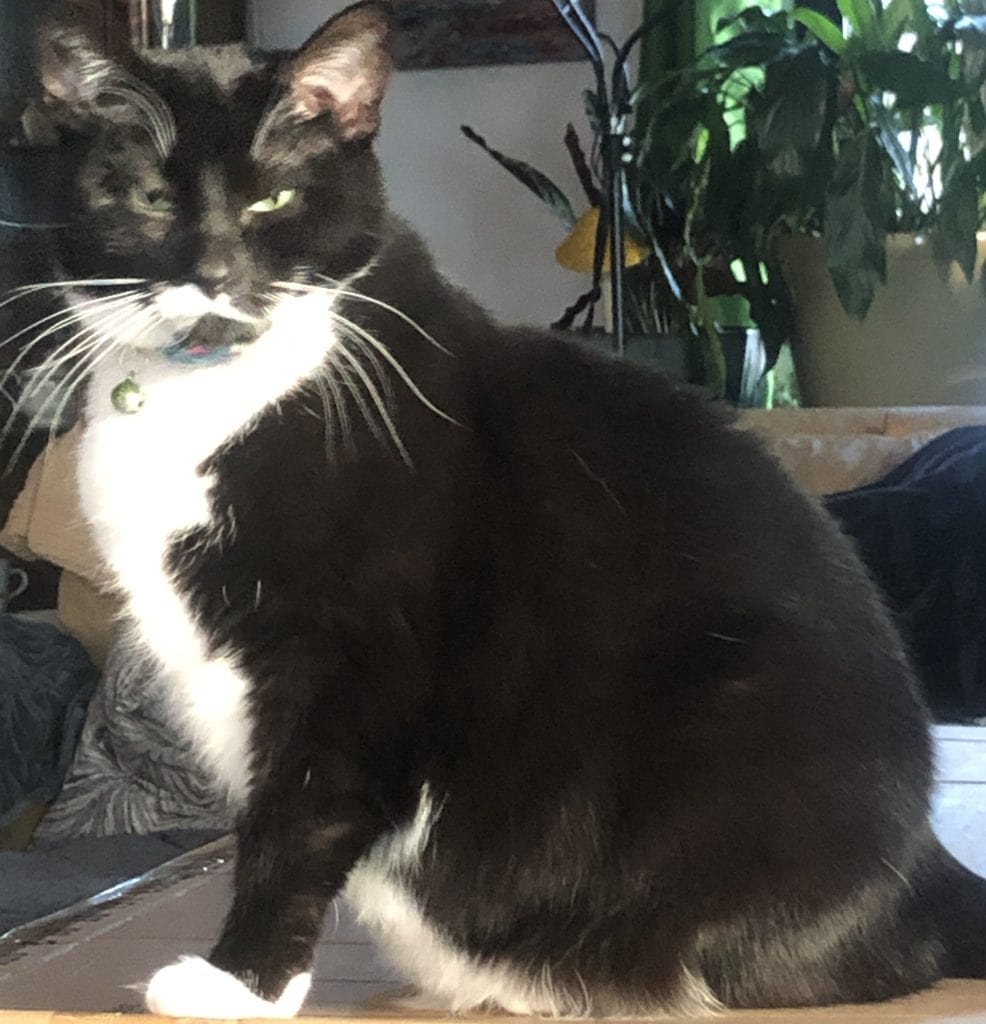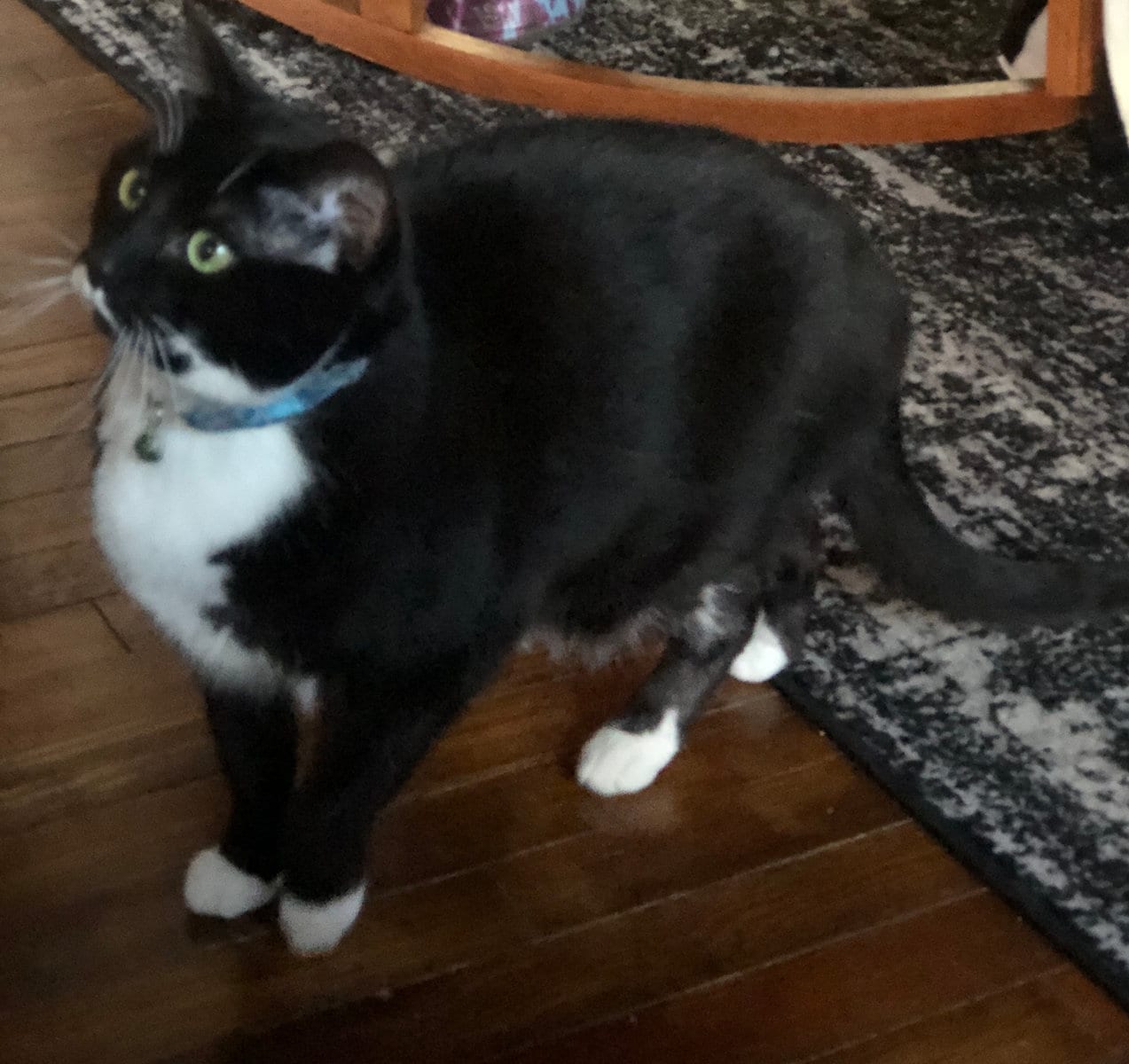The Primordial Pouch: Your Cat’s Fat Belly

Have you ever wondered why your cats got such a fat belly and thought about putting them on a diet?
I did. I thought my cat, Maisey’s cat belly pouch was because of her over-snacking, and was surprised to find out her cat belly wasn’t from pigging out.
My vet informed me that it was her primordial pouch.
I had no clue what he was talking about and I asked him to explain.
What Is The Primordial Pouch?

The primordial pouch is a loose flap of skin on a domestic cat’s belly. However, you will not only find the cat’s belly pouch on your domestic cats, but also your wild cats such as lions and tigers. Contrary to belief, the primordial pouch isn’t a result of overeating or obesity.
It’s a natural feature that has several benefits.
In this article, I’ll give you the facts about the primordial pouch, its functions, and its myths.
The Anatomy Of The Primordial Pouch
The primordial pouch has distinct characteristics with its location and appearance.
You’ll find the cat’s primordial pouch on the lower part of its abdomen between the hind legs. It’s a flap of loose skin that hangs down from the belly.
It has a noticeably sagging and slightly wrinkled appearance which stands out more in some cats than others, depending on various factors. It’s not a taut or tight area. When Maisey walks, it sways back and forth in rhythm with her steps. And it has a soft and flexible texture. Also, the skin of the primordial pouch is elastic, allowing for stretching.
Certain cat breeds have a more prominent primordial pouch. Even within breeds, such as our two tuxedo cats that are brother and sister, the female cat has a large primordial pouch and the male’s pouch is hardly visible. Some will be different depending on whether they were spayed or neutered, which sometimes causes the pouch to be a bit larger. However, spaying or neutering is not the cause of the primordial pouch. More on this later.
Theories And Functions
There is no scientific data that explains the reason for a cat’s primordial pouch, but, there are theories that are an accumulation of wisdom from cat owners and collected interviews, surveys, and anecdotes over the years.
I: Fat Storage Theory
One theory is that it could be a form of evolutionary adaptation.
In the wild, the cat doesn’t always get three square meals a day and can have periods of plenty and scarcity. The pouch is thought to be used to store access fat that can provide a reserve of energy during lean times. It would also allow the cats to stretch their bellies after a large meal. (As when the lion eats a whole antelope in one sitting)
II: Protection Theory
Some believe that the primordial pouch provides an extra layer of protection for the cat’s vital organs during fights and falls. The protective layer of skin allows for more flexibility and less vulnerability to bites and scratches.
III: Stretching Theory

Primordial Pouch Myths
There have been lots of opinions and anecdotes about the primordial pouch and what causes their belly flap. Some are myths and here are four I’ve been able to uncover.
Myth #1
Some have said that the cat’s primordial pouch signifies they’re an overweight cat. This is far from the truth and has nothing to do with weight gain. One difference between the cat’s primordial pouch and simply getting fat is the abdomen of overweight cats is fatty and doesn’t sway or swing like the cat’s belly pouch.
If your cat is overweight or obese, you usually can’t easily feel your cat’s ribs or other bony areas because of the layer of fat. The primordial pouch doesn’t have this layer of fat. Also, obese cats are more rounded where the fat starts higher on their sides whereas the primordial pouch starts lower toward the cat’s abdomen.
Myth #2
It has been said that spaying and neutering causes primordial pouches. These procedures can indeed cause weight gain because of the hormonal fluctuations whereas your kitty will overeat and have a belly weight gain, but they do not affect the primordial pouch.
Myth #3
It can be removed surgically. NOT! The primordial pouch is a natural part of the cat’s anatomy. There is no reason for health concerns or that it’s harmful. So, there is no reason to remove it. It’s believed to be an important part of your cat’s survival.
Myth #4
It has been mentioned that primordial pouches are instrumental in cooling and insulating your cat. There have been no scientific studies or proof to validate this theory.
Caring For Your Cat’s Primordial Pouch
As your cat gets older, they may begin to have a more prominent primordial pouch. Just like humans, they’ll lose skin elasticity with age, and their primordial pouches may sag and swing a bit more. And of course, older cats are less active and their metabolism slows down, so it’s a good idea to make sure they get exercise to help keep the weight off. Physical activity is important to prevent obesity. According to an article in Live Science, “To keep your cat healthy, make sure it hits the recommended target of 15 minutes of exercise per day by encouraging it to play with toys.”
Also, regular vet check-ups to monitor your cat’s overall health and to be assured that the cat’s hanging belly is just the primordial pouch and not weight gain. You can find more about vet visits at “How Often Should You Take Your Cat To The Vet“.
Conclusion
Although there is no scientific evidence of just what purpose the primordial pouch plays, the consensus among die-hard cat lovers and owners is:
the primordial pouches are used to store fat as an energy reserve
the extra layer of skin is to help protect their vital organs from harm during fights or falls
the elasticity of the belly flap is to aid in running, jumping, and twisting.
The primordial pouch may be a mystery, but, it’s just another reason for all of us cat owners to embrace and understand our cat’s unique anatomy. The more we know and learn, the better we can give our feline friend the perfect home.
Have you heard of primordial pouches before? Share your experiences or observations about your cat’s primordial pouch in the comments below. I look forward to hearing your stories.
